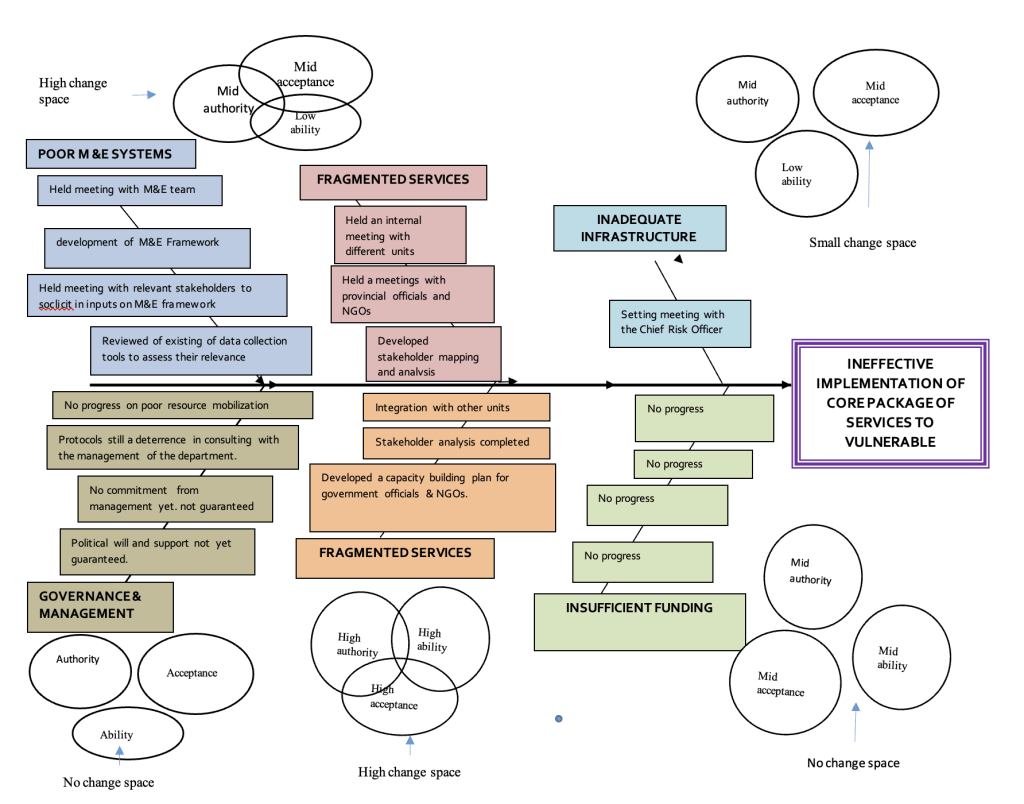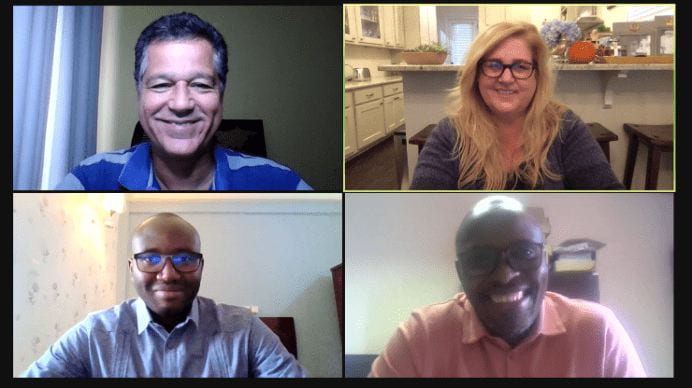Guest blog by Lungile Magqibelo, IPP 2021
I am employed by the government of South Africa in the Department of Social Development which has a core mandate of providing social welfare services to marginalized and vulnerable communities. Amongst my key responsibilities is to develop policies and programs that are responsive to the needs of vulnerable children in the country. The opportunity to attend Implementing Public Policy (IPP) Online program was presented to me by a colleague and friend of mine who is an IPP alumnus of the 2020 group. When I signed up for the course, the only expectation I had was to enhance my skills and knowledge in developing public policies that are responsive to the needs of ordinary South Africans. I can proudly say that the IPP Online course has fully met my expectations and introduced me to various tools such as PDIA, the Fishbone Diagram, and Change Space Analysis. The tools indeed enhance my skills and knowledge and I do not regret joining the program.
IPP Online provided me with learning opportunities and takeaways that I will continuously embrace and integrate into my work. Here are some of the key learnings I’ve reflected upon after the course.
Problem Driven Iterative Adaptation (PDIA) is the key method I learned through this course. It is a unique method that assists in addressing policy and program implementation challenges. What makes it unique is its step-by-step approach which helps you break down policy or program-related problems into their root causes, identify entry points, search for possible solutions, take action, reflect upon what you have learned, adapt, and then act again. What I have learned about this methodology is that if one follows the process it works perfectly. PDIA also assisted me in engaging with participants and those who are affected by the problem. It also suggests strong intersectoral collaboration with other stakeholders which provides a more complete way to gather information and ideas.
Fishbone Diagrams assisted me to get a better understanding of my implementation challenge. I was able to use the ‘fishbone’ to identify the causes that resulted in the poor implementation of my policy challenge. For example, I identified the five main causes that resulted in my policy challenge:
i. Poor monitoring and evaluation systems
ii. Fragmented services
iii. Inadequate infrastructure
iv. Governance and management support
v. Insufficient funding
Change space analysis became useful when I integrated it with the fishbone as I was able to list and categorize challenges. It also assisted me in setting realistic objectives and could easily identify causes that needed short, medium, and long-term intervention. As a result, I knew which causes could be resolved at my level and those that needed management and political intervention.
Peer learning group sessions were immensely beneficial to me because I was able to learn about other countries and brought diverse information. I learned how policy challenges are addressed in Brazil, Burkina Faso, Peru, and the United States. Group members were able to provide constructive inputs on how to approach certain issues especially when I had to establish a team to work on my policy challenge.
I am working on ‘Ineffective Implementation of Core Package of Services for vulnerable children in South Africa’ as a government policy that seeks to address the plight of vulnerable children in the country. The core package of services was developed as a response to the needs of vulnerable children. However, its implementation is currently faced with many challenges such as insufficient resourcing amongst others.
I believe that I made considerable and incredible progress in addressing my policy challenge though some of the causes needed long-term intervention. The use of fishbone and PDIA has provided me with some insights on how I should deal or address with my policy challenge.
My Fishbone Diagram:

Poor monitoring and evaluation systems: developed a monitoring and evaluation tool in partnership with stakeholders to strengthen existing monitoring and evaluation systems. The tool is currently piloted in three provinces and will be rolled out in other provinces in the 2022-2023 financial year
Fragmented services managed to use existing structures and forums in the department as leverage to put the agenda of the core package of services forward. I further established an internal task team meeting to address the silo approach in the department in order to foster the integration of services. There is now an existing coordination structure in place such as provincial coordinators’ meetings to address the issue of fragmented services.
Inadequate infrastructure is one of the causes that need long-term intervention as it needs to be funded. There are existing policies and legislation that guides the development of infrastructure for children. However, many of these are managed by Non-Government Organisations and do not have sufficient resources to improve the infrastructure in order to meet the set standards.
Governance and management support provided by the minister has been minimal as she decided to launch the program and foster integration with different stakeholders.
Insufficient funding is still a challenge. However, provinces were able to make provisions within the existing budget to ensure that the program is being implemented. However, this will be included in future planning by ensuring that this forms part of future planning and the Medium-Term Strategic Framework (MTSF). The IPP program assisted me to establish a network of partners and stakeholders that would assist in the implementation of my policy challenge effectively.
My Peer Learning Group Members:

I have been motivated by the fact that policy implementation challenges are not only unique to South Africa but a global problem. I also got motivated by the support and guidance received from my peer learning group members. The peer learning groups also assisted me in understanding the importance of working in groups. The approach of using teams in addressing or tackling program or policy challenges is key because it provides an opportunity to make well-informed and collective decisions. I also found the use of the PDIA approach to be effective because it also provides an opportunity to address program implementation challenges at the initial phase by involving all the relevant role players. I will make use of PDIA and teaming as a new way of working in addressing my policy challenge.
I am able to integrate what I have learned from this course. I found the use of PDIA very much relevant to my work. I also learned that as an individual I should be able to adopt new approaches and methodologies that are introduced in order to improve the quality of work. The world is evolving and thus new approaches should be embraced and more importantly also find ways to integrate with existing interventions
The words of wisdom that I could share with my fellow PDIA practitioners is that you need to be flexible, open-minded, and able to adjust to new innovations that are being introduced especially if they will help improve the quality of work and services offered to the marginalized and vulnerable communities.
This is a blog series written by the alumni of the Implementing Public Policy Executive Education Program at the Harvard Kennedy School. Participants successfully completed this 6-month online learning course in 2021. These are their learning journey stories.
